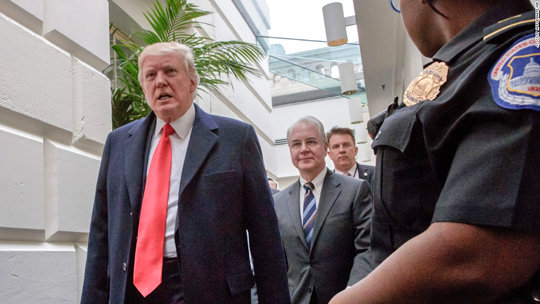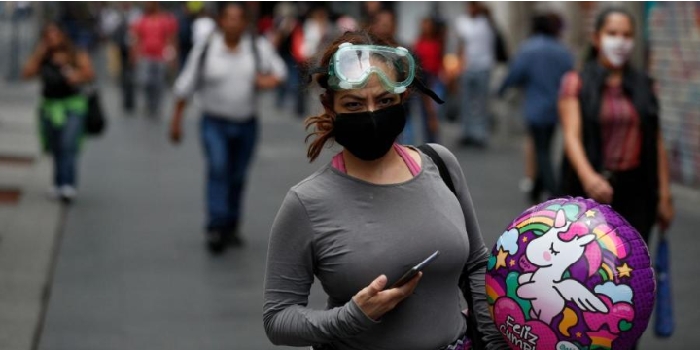Washington, Mar 24: House GOP leaders are hurtling toward a vote on Friday on their embattled health-care bill without knowing for sure they have enough support to pass the measure, after yielding to Trump administration demands to act now.

If the high-stakes gamble works and the House manages to pass the Obamacare replacement bill, it will be an important win for President Donald Trump and House Speaker Paul Ryan who have formed an uneasy alliance to repeal the health care law.
But if the measure is blocked, it will be an embarrassing setback that casts doubt on the ability of Trump and Ryan to deliver on their ambitious agenda, including a sweeping tax overhaul and infrastructure package, both of which are being closely watched by Wall Street.
“For those who are on the fence one way or another, it's a long night of the soul for them,” Representative Tom Cole of Oklahoma said late Thursday. “It's very much an individual decision now.”
“Success breeds success; failure, you know, tends to compound itself,” he added. “So tomorrow is a very important moment for us and if you don't know that, you don't get it.”
The Trump administration made a last-minute deal with House conservatives to change the bill — by removing Obamacare's requirements that certain essential benefits be covered by insurance — in an effort to win over holdouts, who had forced GOP leaders to delay their vote, originally scheduled for Thursday.
Then Trump aides, including senior strategist Steve Bannon, went to Capitol Hill to deliver a message in person to House leaders and the Republican caucus that the president has run out of patience: Trump wanted a vote on Friday, win or lose, even if that means leaving Obamacare in place.
‘No more negotiations'
“We have to have a vote tomorrow. He expects it to pass,” Representative Chris Collins of New York said, speaking about Trump. “We are done negotiating, there are no more negotiations.”
“If it loses, we just move on to tax reform,” added Collins, a Trump ally.
House conservatives, including Freedom Caucus chairman Mark Meadows, emerged from the meeting saying they were still leaning against the bill, but were still evaluating the final package.
Meadows said late on Thursday “I'm a no” for now, but said members had been given “a binary choice” and that he will talk with other members before making a final decision.
GOP leaders didn't agree to a core demand of the Freedom Caucus to eliminate other insurance regulations, according to a senior Republican aide.
Representative Thomas Massie of Kentucky, who opposes the bill, said Republican leaders are taking a risky bet.
“If they bring this to the floor and it doesn't get to 216 quickly, the momentum could go in the other direction and they could come way short,” he said. “Because you don't want to be the person who fell on your sword and voted yes for a piece of legislation that never passes.”
‘Leaning the other way'
But other House conservatives said they were getting the sense that enough of their colleagues would end up backing it.
“I'm still a no, but it looks like it's leaning the other way,” Freedom Caucus member Ted Yoho said. Representative Mark Sanford of South Carolina agreed, saying he's picking up that it is the “sentiment” of most of the conference now to pass the bill.
The bill has struggled to win over far-right members who have demanded a more complete repeal of Obamacare, but it's also unnerved moderates concerned about projections that millions will lose coverage. A number of moderates came out against the bill this week, giving Republican leaders little room to negotiate changes.
Ryan put a brave face on the upcoming test of whether he and Trump can deliver the votes.
“For seven-and-a-half years, we have been promising the American people that we will repeal and replace this broken law because it is collapsing and hurting families,” he said. “Tomorrow we will see that.”
The GOP bill, H.R. 1628, would reverse massive gains in health coverage under the Affordable Care Act, which brought the uninsured rate to a record low. The proposal would pull hundreds of billions of dollars out of the health system by winding down Obamacare's expansion of Medicaid and limiting its subsidies, threatening revenues for hospitals, doctors and insurance companies.
Signs that the bill was in trouble on Thursday unnerved US markets, helping to erase gains, while sending hospital stocks higher.
Some changes
Meadows and other conservative Freedom Caucus members demanded a provision in the bill — agreed to by Trump and GOP leaders that would scrap the essential benefits portion of the Affordable Care Act, which requires insurers to cover 10 categories of services, for the individual market. Those services include hospitalization, ambulance services, maternitycare, pediatric services, mental health and substance abuse treatment, prescription drugs, rehabilitative care and laboratory services.
Other new provisions described by lawmakers Thursday night include a $15 billion boost to a new state flexibility fund and six more years of a 0.9% Medicare tax on high earners.
That last bit is needed to pay for what is expected to be a surge of people buying lower-cost insurance products, triggering tax credits that run from $2,000 to $4,000 per person for eligible people.
If the bill makes it to the Senate, it is expected to undergo significant changes there as well, including boosts to tax credits for people ages 50 to 64 who are hit with massive premium spikes under the bill.
Outdated CBO score
But the last-minute changes mean that Republicans will be voting on the measure without a final estimate from the Congressional Budget Office about how many millions of Americans will lose coverage or how much the measure will cost.
In another development that could unease conservatives, the CBO issued a new estimate Thursday to account for changes made to the bill earlier in the week. The nonpartisan agency cut its estimate of how much the bill would shrink the federal budget deficit, saying the updated measure would reduce the deficit by $150 billion over the next decade, $186 billion less than the initial forecast of $337 billion.
Of course, if the measure manages to pass the House, it still faces significant hurdles in the Senate.
Representative Kevin Cramer of North Dakota said he fears that even if the Freedom Caucus succeeds at getting its wish and delivers the votes for the bill to pass to the House, the provisions they demand won't pass muster under Senate rules.
“It seems that they want more inclusion on the essential benefits and some of those things that the speaker and others believe” will violate Senate rules, Cramer said. “And for some, I think they're spoiling for a fight. They want to challenge the Senate.”






Comments
Add new comment